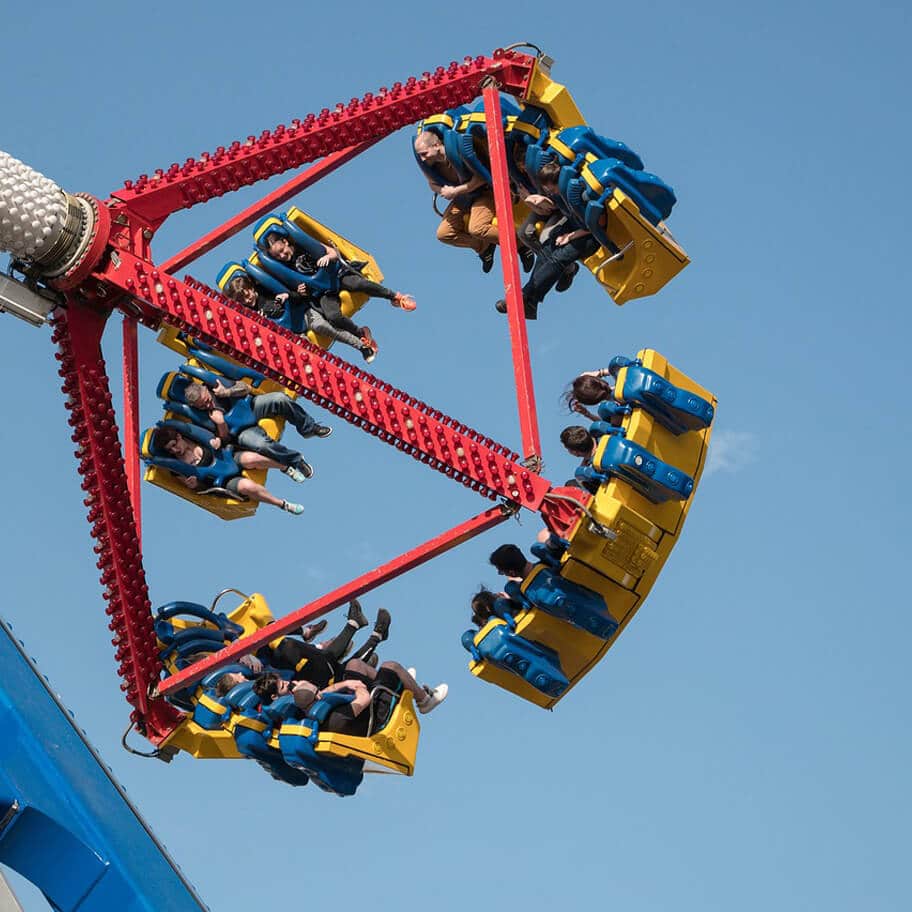Who is Liable?
Amusement parks can pose significant threats to the public if the appropriate safety procedures aren’t followed. Any person who has involvement in the organisation, maintenance or operation is obliged to follow a set of health and safety procedures. An injury that occurred on the grounds is categorised under a Public Liability Accident. If negligence from another party is confirmed you may be eligible to seek a legal remedy for your injuries. If you have suffered a personal injury from an amusement park accident contact us. Our team of legal practitioners are on hand to give assistance to any questions or queries about the claims process.
Safety Requirements and Duty of Care
Amusement parks have a legal obligation to provide a duty of care to all people who enter their premises. As visitor numbers can escalate within a short period of time. Therefore, it can be difficult to ensure all individuals remain safe and unexposed to risks. In an attempt to achieve this objective, all parks must abide by certain legislation. These legislations include:
- Manual Handling Operations Regulations 1992
- The Health and Safety at Work Act 2005
- Reporting of Injuries, Diseases and Dangerous Occurrences Regulations 2016
- Health and Safety Regulations 1996
- Work at Height Regulations 2005
By enforcing these legislations it benefits both the organisation and the public’s best interest. In addition to this, all employees of the amusement park have a set of duties to ensure the best level of health and safety is being provided. Some examples of these duties consist of:
- Designers, manufacturers and installers have a duty to be confident that the attractions are safe, installed adequately and thoroughly researched.
- All attractions must be constantly maintained in a safe condition.
- Inspections of all attractions should be regularly carried out to maintain safety standards.
- Individuals with overall control of the premises must consider risk assessments implementation, safe layout and emergency procedures.
Common Injuries
With theme parks beginning to become an increasing trend in Ireland, it is important to be familiar with the risks associated with attending such an event. Injuries linked with public liability accident claims include:
Causes
The most common causes of theme park accidents are:
- Defective or faulty attraction – for example, a fault on a roller coaster
- Slip, trip or fall – these can happen from either poorly maintained or uneven grounds or attractions.
- Food poisoning – this can occur due to poor kitchen hygiene standards
- Falling objects – this could happen if a piece of a ride falls off or barriers fall down on people causing injury, for example.
Child Injury in a Theme Park
In cases where your child (aged under 18) has been injured in a theme park the rules for making an injury claim are different. A minor cannot make a claim themselves for any injuries sustained until they turn 18. However, once they turn 18 they have two years to make their claim. Therefore, before their 18th birthday, a parent or guardian can bring a claim forward on their behalf. It is advisable to speak with a solicitor about a child injury claim. In order to ensure that you take all the necessary steps. Once the claim a settlement may be reached. However, this settlement is held with the courts until the child turns 18.
What do I do if I'm involved in an amusement park accident?
Following an accident in an amusement park, there are a number of steps you should follow:
-
Seek medical attention
Your health is your wealth and should be your first priority. Immediately after an accident, take a second to assess yourself to determine if you have any injuries. Then check if anybody else involved in the accident needs medical attention. If anybody has sustained a serious injury, ensure that you contact an ambulance to attend the scene.
You must remember that minor injuries where you ‘feel fine’ could progress to a more serious injury in the future. In this case, it is always better to be safe than sorry and advisable that you go to your nearest accident and emergency (A&E) or local GP to be checked out.
-
Report the accident
It is important that you report the accident to management. You may be required to assist to fill in an accident form. This is to provide them details of how the accident occurred and details of the injury. You should also request that they preserve any CCTV footage.
-
Identify any witnesses
Collect contact details of any witnesses to the accident – their names and contact information.
-
Document the incident
It is important that you collect all the relevant information in connection with your accident:
- How the accident happened, time and date of the accident.
- Details of any witnesses to the accident (Including staff and other customers); their names, contact information.
- If there are any CCTV recordings of the accident.
- Take pictures from different angles of where the accident happened and what caused you to slip, trip or fall.
- Take pictures of any injuries you suffered, this will help your solicitor to understand how the accident happened.
-
Speak to a personal injury solicitor
If you are considering moving forward with a claim for any personal injuries sustained, it is advisable that you speak with a public place accident claims solicitor as soon as possible. If you are proceeding with a claim, the first step will be submitting your claim to the Injuries Board for assessment. A solicitor can help you prepare your application to the Injuries Board and ensure that you follow the process in the correct format, meaning that you can move forward with your claim quickly without unnecessary delays.
It is important to remember to keep copies of any expenses that you have incurred as a result of the accident. It is also imperative to retain copies of medical reports or incident report forms where possible as you will need them when making a claim.

